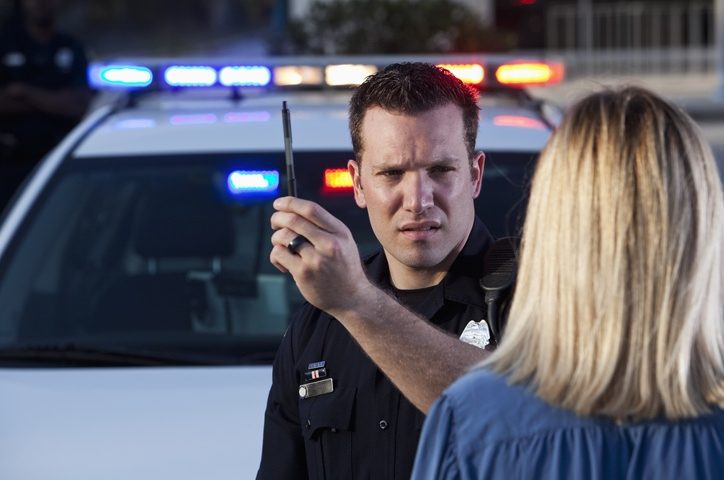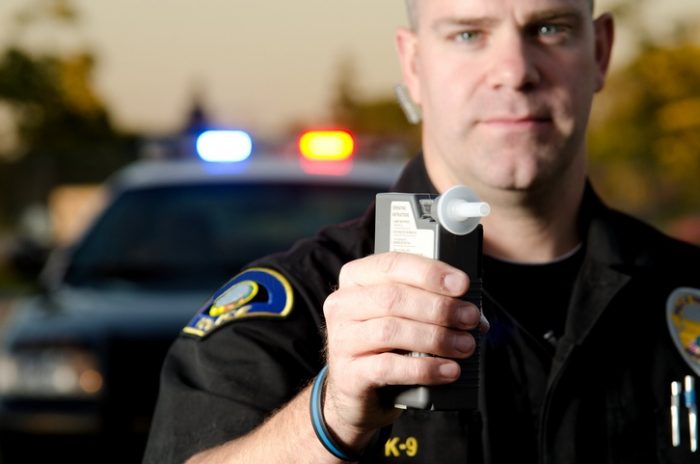
What Are Standardized Field Sobriety Tests?
Call Houston DWI Lawyer Clyde W. Burleson at ☎ 713-628-1503 For a Free Consultation
Standardized Field Sobriety Tests (SFST) are three tests to assist police officers in making arrest decisions of driver impairment due to alcohol. These tests have been scientifically proven to validate legal intoxication of drivers in 90% of cases if administered properly by a trained officer.
The three tests are:
- Horizontal Gaze Nystagmus test (HGN)
- Walk and Turn test (WAT)
- One Leg Stand test (OLS).
Alternative field sobriety tests, such as the Finger-to-Nose test, may also be administered for suspicion of driver impairment, but these tests have not been scientifically validated by the National Highway Traffic Safety Administration and therefore may not be admissible in court.
Officers may administer one or more field sobriety tests to determine if the driver is impaired. It is important to know that police officers have broad discretion when administering a field sobriety test.
It is possible for a sober driver to fail a SFST, due to reasons such as certain medical conditions, injury, medication, or disabilities. If a driver has a justifiable reason why he may fail any part of a Standard Field Sobriety test, the driver should tell the officer to ensure the officer makes a note in the official record.
If a driver “fails” any of the SFST, the police officer will ask the driver to take a Breathalyzer test or a chemical test to confirm the driver’s blood alcohol content.
While there are many debates about the accuracy of field sobriety tests, Standardized Field Sobriety Test results are admissible as evidence in court.
Horizontal Gaze Nystagmus Test (HGN)
The HGN test is typically the first SFST that is administered by a police officer. Nystagmus is a condition of involuntary jerk-type eye movement that occurs when looking toward the side. This movement can be exaggerated when a person is intoxicated.
In this test, the officer is checking the driver’s eyes when following a moving object. The officer checks for three cues in each eye, for a total of six cues:
- Does not smoothly follow a moving object
- Distinct and sustained nystagmus at maximum deviation
- Onset of nystagmus prior to 45 degrees
If four or more cues are observed during the HGN test, research has shown the driver most likely has a Blood Alcohol Content (BAC) at or above 0.06%, and if all six cues are observed, the driver most likely has a BAC at or above 0.08%, although a BAC of .08 or greater is NOT required for a DWI arrest.
Walk And Turn Test (WAS)
The WAT test is a divided attention test with two stages: instructions and walking. This test measures the driver’s ability to maintain balance, walk in a straight line, and follow directions.
During the WAT test, the driver is instructed to take nine heel-to-toe steps along a straight line, turn around, and repeat the heel-to-toe steps. The driver must keep his arms to his sides during the test.
In this test, the officer is watching the driver for eight cues
- Cannot keep balance during instructions
- Starts walking too soon
- Stops walking before end of test
- Does not touch heel-to-toe
- Steps off the straight line
- Uses arms for balance
- Incorrect turn
- Incorrect number of steps
The driver is assumed to have a Blood Alcohol Content higher than 0.08% if 2 or more are true.
One Leg Stand Test (OLS)
The OLS test is another divided attention test with two stages: instruction and balancing. In an OLS test, the driver is instructed to raise one leg about 6 inches off the ground and stand for about 30 seconds while counting. The drier must keep his arms to his side during this test.
During this test, the officer is looking for four cues:
- Swaying while balancing
- Using arms to balance
- Hops to maintain balance
- Putting foot down early
A driver is impaired if at least 2 are true.
Contact a Houston DWI Lawyer
Contact Clyde W. Burleson, P.C. at 713-628-1503 if you have been arrested for DWI in Houston, Texas.




